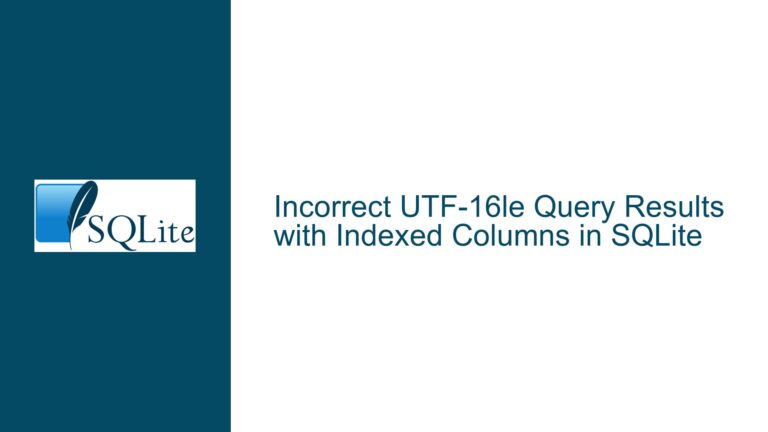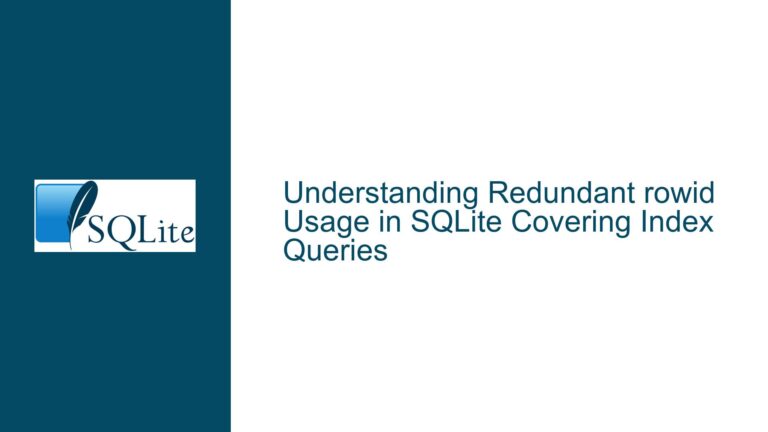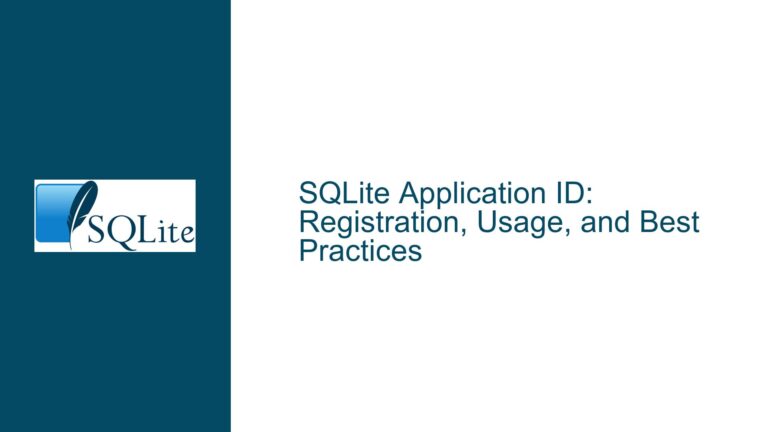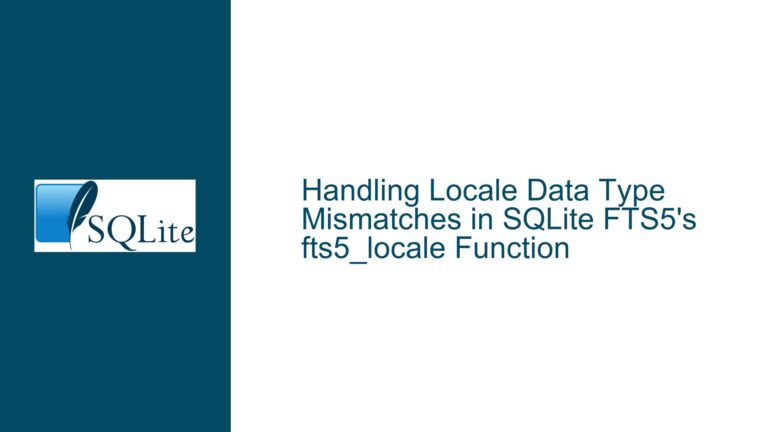Incorrect UTF-16le Query Results with Indexed Columns in SQLite
Understanding the UTF-16le Encoding and Index Interaction in SQLite The issue at hand revolves around the behavior of SQLite when querying a UTF-16le encoded database with an indexed column. Specifically, the problem manifests when using the GLOB operator to filter results based on a pattern match. In this scenario, the query returns incorrect results when…









